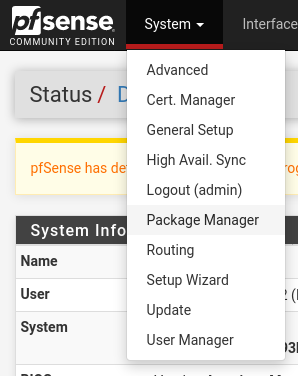

- Install pfsense from usb for free#
- Install pfsense from usb how to#
- Install pfsense from usb install#
- Install pfsense from usb drivers#
- Install pfsense from usb update#
The Mini PCI Express interface can be accessed inside the Intel NUC and requires some work to be done, but this interface would likely be the most solid and the Mini PCI-e supports transfer rates up to 2.5Gb/s via full-duplex channel, data rate auto negotiations, IEEE 802.1Q VLAN Tagging and IEEE 802.3az Draft 3.0 (EEE). M.2 to Mini PCI Express cable + Mini PCI-E card NIC Adapter – Another option is to use the Mini PCI-E card NIC adapter. USB 3.0 NIC Adapter – The cheapest (but likely not the most reliable) way to add a second NIC is to buy the USB 3 to Gigabit NIC adapter such as AmazonBasics USB 3.0 to 10/100/1000 Gigabit Ethernet Internet Adapter which costs around 20 dollars and can be plugged into USB 3.0 port on Intel NUC:Ģ. I found the following options to accomplish the task.ġ. Intel NUC only comes with a single Network Interface Card (NIC), but we will need a second NIC in order to have one dedicated to the incoming WAN traffic from the provider’s router and another one for the outgoing LAN traffic going to WI-FI router. Option #1 – Add a Second Network Interface
Install pfsense from usb how to#
There are essentially two options for how to go about the job of converting Intel NUC into pfSense, both of which I’ll outline below. I prefer this solution because it allows me to keep using Intel NUC for other purposes and given I have 16GB of RAM available to me, I can easily dedicate 4-8 GBs to pfSense virtual router.
Install pfsense from usb install#
So, instead, I’ve decided to install Oracle VirtualBox on Windows 10 that is already running on this box and then install pfSense as a virtual router. I am currently using this device as a Windows media server and it’d be a waste of resources to turn the entire Intel Nuc mini-PC ($400 device) into a dedicated pfSense router. I own an older model 5 – Intel® NUC Kit NUC5i5RYH with the following configuration: 240GB OCZ-Agility4 SSD, 16 GB of RAM and Intel Core i5-5250U CPU 1.60GH, which is running Windows 10 Professional.
Install pfsense from usb for free#
My goal is to introduce a pfSense device in front of my Wireless access point allowing me to completely control my network and make use of many options that come for free when using open-sourced pfSense solution, such as run it as a state of the art Firewall and VPN device:Ĭonverting Intel mini-PC into PfSense Router It essentially allows anyone to turn an old PC into a network device that would otherwise cost serious money. It can be configured and upgraded through a web-based interface and requires no knowledge of the underlying OS system to manage. What is pfSense? pfSense can be installed on a physical computer or a virtual machine to essentially create a dedicated firewall/router network device.

This is my current network config that I’ll be putting behind a pfSense firewall.

Then the adventure - pfSense is without a doubt the fastest most capable low cost router I have ever deployed, and have had my business and many of my clients running it dependably for many years there is alot you can do with this router, and the options may appear overwhelming, or even cryptic for the uninitiated, but it does fairly well with the guided install and setup.In this post, I discuss the process of converting an older Intel® NUC Kit NUC5i3RYH mini-PC into a virtualized pfSense router. Once you have it booting into the installer it will guide you through the install process - it is fairly smooth. You can just plug the USB key in and turn it on and see if it boots to the pfSense installer - if not you will have to look up your Motherboard/Bios documentation to learn how to set the startup boot device. If your machine boots from USB the installation is fairly straight forward - you may have to go into the boot bios of the computer to instruct it to boot from USB rather than Hard Drive or Network boot. The older computers I have installed pfSense on didn’t easily support installing by USB boot and had to be installed via a bootable pfSense install CD.
Install pfsense from usb drivers#
Most newer hardware (within the last 10 or more years) will be what is called PnP (Plug and Play) which will be recognized by the OS and drivers automatically installed. The OS will contain ‘drivers’ that are specifically written to operate the hardware, and/or in other cases you may have to download and install these manually.
Install pfsense from usb update#
(occasionally there are hardware that may need or benefit from what is referred to as a firmware update to the chip, but this is less common these days and usually the manufacturer will provide a tool to update the firmware). Yes, typically the hardware is ‘operated’ by the software or OS. It is an adventure, the bleeding edge always is!


 0 kommentar(er)
0 kommentar(er)
